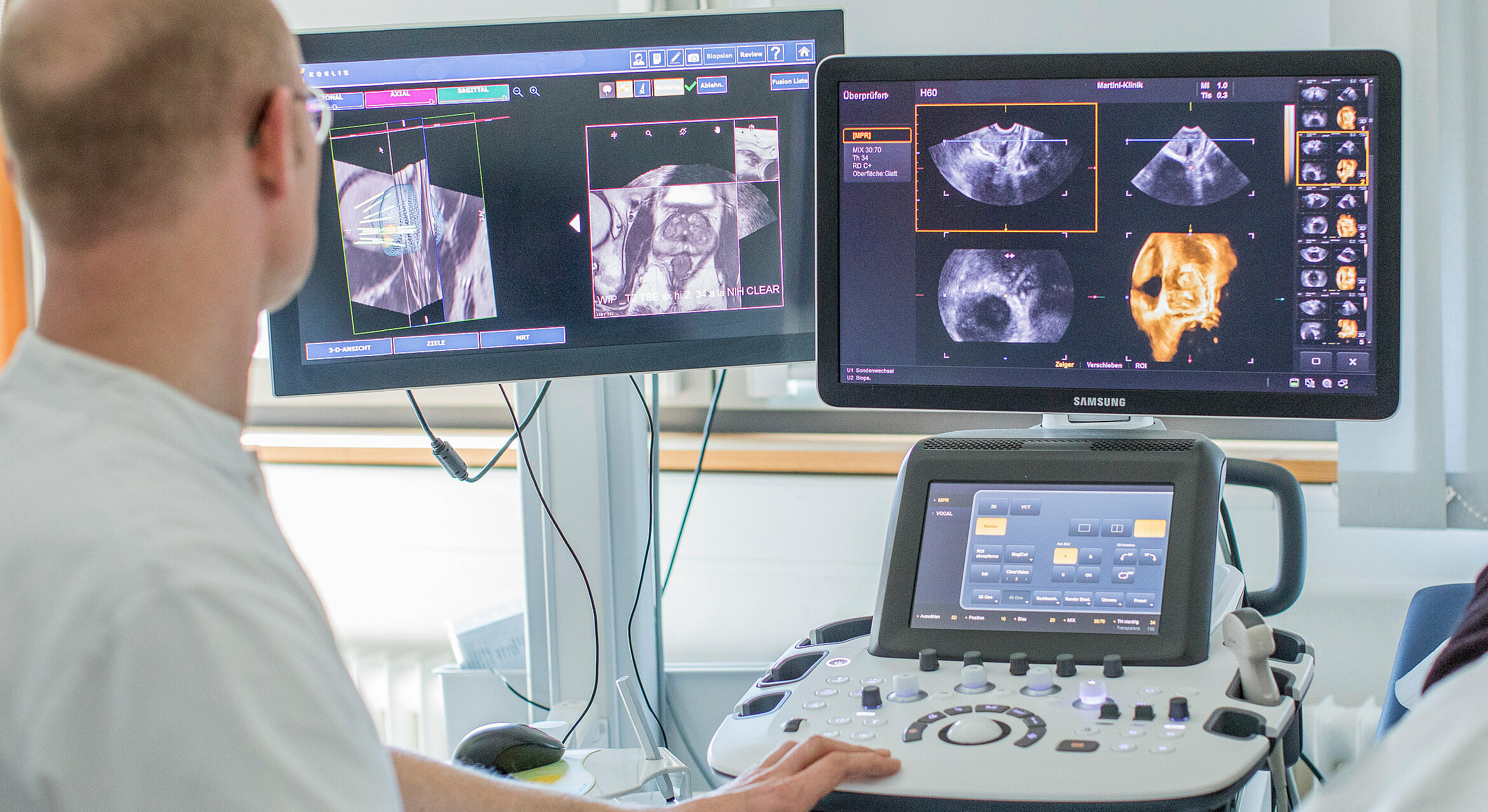MRI fusion biopsy with image recording
In a fusion biopsy, a conventional ultrasound image is used to create a three-dimensional image of the prostate in a matter of seconds. This 3D image is then fed into the live image (3D TRUS biopsy). At the same time, the image from the magnetic resonance imaging (MRI) scan is combined with the live ultrasound image, with both images precisely laid over each other. A fusion biopsy is therefore better able to visualise certain anatomical and functional aspects of defined areas within the prostate. Information about suspect areas generated by both techniques can then be used in combination during the biopsy.
A fusion biopsy makes it easy to detect altered tissue, which enables the doctor to take samples using the biopsy needle with greater precision. Making digital records of the biopsy removal sites also makes it possible to revisit the locations of abnormal findings, such as during a re-biopsy in an active surveillance schedule.
At the Martini-Klinik, we can perform MRI-guided fusion biopsy using a range of instruments as well as transrectal biopsy via the rectum and transperineal biopsy via the perineum.
To help plan a fusion biopsy, we send the MRI images to the Radiology department at UKE for analysis and assessment. This takes a few days. If you have your MRI scan at UKE, the Radiology department can analyse the images and send us an electronic patient record without delay.

